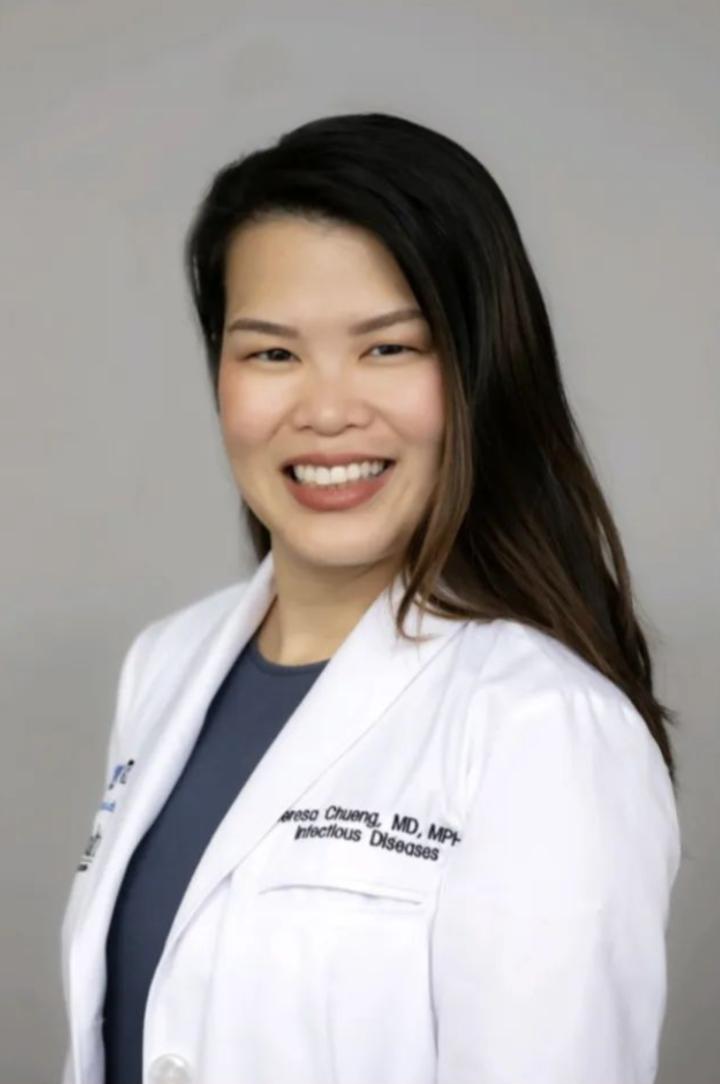Blog
Telehealth Harm Reduction to be Highlighted during ASAM’s State of the Art Course

Many creative ideas have been borne out of necessity due to the COVID-19 pandemic. During ASAM’s State of the Art Course, which will take place October 17-18 in Baltimore, Maryland, Teresa A. Chueng, MD, MPH, assistant professor in the Division of Infectious Disease at the University of Miami Miller School of Medicine, will share one pandemic-era idea that has dramatically changed how people with substance use disorder (SUD) are now receiving care: telehealth harm reduction.
“During the pandemic, buprenorphine prescribing laws were made more flexible and as a result, we were able to provide medications for opioid use disorder by telehealth,” Dr. Chueng said. “This allowed us to harness the power of technology to bring medical services to people who needed them the most. That’s the silver lining of the pandemic.”
The goal of telehealth harm reduction, Dr. Chueng said, is simple: Help people with substance use disorder who can’t typically seek help.
“The idea is that people who inject drugs have traditionally been a largely ignored population with high health risks, including HIV, Hepatitis C, and infection-related injuries,” she said. “A lot of these individuals avoid going to traditional health care facilities, such as hospitals and clinics, and they just have a lot of health needs that are not being met.”
They do, however, frequent syringe services programs in Miami where they might pick up harm reduction supplies, including syringes, condoms, and other items for their health needs.
“We’re bringing telehealth technology to syringe services programs where our patients might frequent,” she said. “If they don’t have a phone or transportation to other health care facilities, at least they can get to the needle exchange, and then we can connect them with a doctor on a computer or an iPad who can see them right away.”
At the needle exchanges, the patients are greeted by a peer counselor, who helps them navigate the computer and the telehealth interface.
“If they need to exchange needles, they can go ahead and do that,” Dr. Chueng added. “If they need other help, such as a wound exam, we can take a picture and send it to the telehealth provider.”
Other staff at the needle exchange, known collectively as a community engagement team, help connect patients with substance use disorder to other care programs they may need.
“The whole team helps out in whatever way possible,” Dr. Chueng said. “If a patient needs something from a medical doctor, they’ll call us, and we’ll jump on it straight away. The staff can help with other services as well, like linkage to housing.”
Dr. Chueng said there are multiple common SUD-related issues she and other physicians see when patients use the telehealth program.
“A lot of patients have opioid use disorder, and so we are either initiating them or continuing their buprenorphine,” she said. “They might come for wound care. A lot of our patients inject drugs, so they might -- especially in the wake of the xylazine, or tranq, waves -- have serious wounds that need attention. They might not have a primary care doctor, so we might arrange for prescription refills or address their primary care needs. We’re doing a lot of STI screening and treatment. We’re screening on-site for HIV and Hepatitis C, -- anyone who converts, we have a test and treat program.”
As an addiction medicine specialist, Dr. Chueng said she has found the telehealth harm reduction program to be rewarding as it helps her continue to experience the most fulfilling part of addiction medicine: a way to help change people’s lives.
“It’s seeing someone who hasn’t really experienced kindness or humanity and taking care of them when no one else believes in them, or if they don’t have support, following them through and seeing them later when they have stable housing, they’re on their medication, they are working again,” she said. “To experience all of those changes together is such a rewarding feeling.”
Since telehealth services are already prevalent throughout the country, Dr. Chueng hopes those who work in harm reduction will see how easily the technology could help them connect with the people they serve.
“Many places have started to adopt telehealth harm reduction as a philosophy, but if we’re able to reproduce that throughout the country, then more people will gain access to harm reduction supplies, medical care, etc.,” she said. “I’m hoping that this will lay the foundation for a better model of care for people who inject drugs. I hope it transforms the way people who inject drugs access health care, and I hope it helps overcome marginalization and stigma by meeting people where they are.”
The State of the Art Course is designed specifically for physicians and health care professionals seeking advanced knowledge about breakthroughs in the field. Attendees will learn from the nation’s leading experts in addiction medicine through this 11-session course that provides quick, focused updates on advanced-level research. You can register for ASAM’s State of the Art Coursehere.
